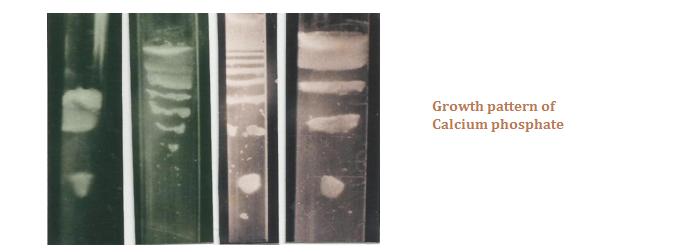
Open Access

Subscription Access
Liesegang patterns, growth kinetics, inhibition and dissolution of calcium phosphate: A constituent of renal stone
Alpana Tripathi, Gopal ji Srivastava, Sashank Srivastava, Ishwar Das
Abstract
Urinary stone disease has beenprevalent in human beings from many centuries. It has affected up to a quarter of population in certain geographic area and hence poses a significant health problem. Approx 85% human stones are calcium stones comprising of oxalate and phosphate, either alone or in combined forms. Though, super saturation of stones forming salts in urine is essential. The stone formation is a multistep process and it includes nucleation, crystal growth, crystal aggregation and crystal recantation. Various substance in the body have an effect on one or more of the these stone forming processes, thereby influencing a person’s ability to promote or prevent stone formation. Herein we studied formation of calcium phosphate, which is deposited in many diseases but mechanism of its formation has been speculative. We investigated the precipitation pattern of calcium phosphate, effect of pH and role of bacteria particularly E.coli in the precipitation of calcium phosphate,role of inhibitors and promoters in formation of calcium phosphate.
Keywords
Urinary Stones; Urolithiasis; stone formation
Full Text:
PDF

ISSN 2347–9825
Authors/visitors are advised to use Firefox browser for better experience of journal site.
Open Access: Researcher from developing/low economy countries can access the jorunal contents through WHO-HINARI .

 ISSN 2347-9825
ISSN 2347-9825

